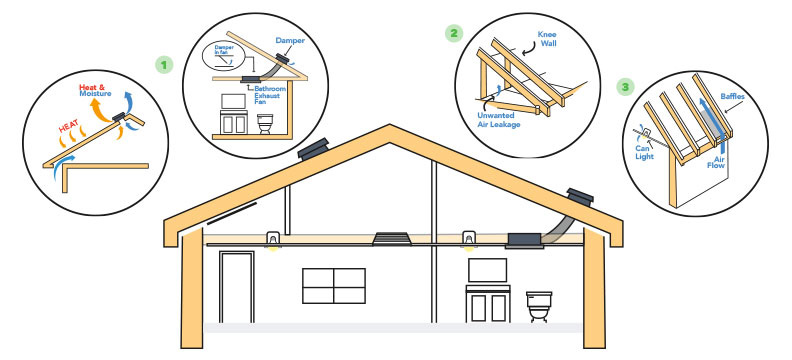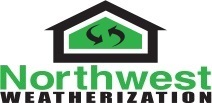How Can I Tell If I Have Enough Attic Insulation?
One quick way to determine if you need more is to look across the span of your attic. If your insulation is just level with or below your floor joists (i.e., you can easily see your joists), you should add more. The current code of R-38 recommends that you have about 13.8 inches of insulation. Energy Star, however, recommends an R-49 for our area.
Ask yourself these simple questions:
- Does my insulation cover my attic evenly?
- Can I see exposed rafters?
- Is there any exposed sheetrock?
If you answered yes to any of these questions, your attic could use more insulation. Our modern insulation materials will give you a maintenance (and worry!) free attic. One that will keep your home energy-efficient and comfortable. Current minimum building standards require that an insulation value of R-38 be installed in all new homes. The US Department of Energy, however, recommends a min of an R-49 to ensure optimal energy efficiency in our climate.
What type of insulation is best?
We use high-quality blow-in loose-fill fiberglass insulation for most of our attic insulation jobs because it helps keep our client’s costs down. Benefits also include the fact that it doesn’t settle like cellulose insulation. Not every attic is the same; some are best insulated with batts. Other attics require polyiso foam board (like RMAX ridged foam), and others require a dense pack product like JM Spider or Knauf Jet Stream. As with each aspect of our company, we want to do what is best for our clients. This is so if you need another job done, we can help with it. Wonder what would be best for your home? Give us a call at 503-691-9900, and we can come out and take a no-obligation look for you.
Why Fiberglass?
Fiberglass is made of recycled glass and silica. It is then spun into fibers. The tiny air spaces help to slow down the transfer of heat. The resistance to the transfer of heat is called the “R” value. The higher the R-value, the higher its resistance to the transfer of heat. Fiberglass can be blown in or laid down in pre-made batts, depending on the space needing to be insulated. Our fiberglass attic insulation is formaldehyde-free, uses only a vegetable binding agent and is a great green insulating solution. Even though it is a little more expensive than cellulose insulation, we use fiberglass because it is a natural fire retardant.
- Low cost
- Versatility
- Flame and water resistance
- Competitive R-value
- Green eco-friendly solution
Other attic-related services: Insulation Removal & Vermiculite Testing
We also do attic insulation removals. Whether your insulation has rodent damage, water damage, or it smells funny, and you want it gone, we can help. Some older homes have asbestos and vermiculite insulation. While these are great insulators, they are hazardous to your health. Depending on the amount of vermiculite or asbestos, you might need to have these professionally removed. We can take a small sample while we are out, providing you with a free estimate for removal. There is a small fee for the test. However, we will take the sample to get tested and provide you with a report to see what percentage of asbestos or vermiculite is present. For more information on asbestos and vermiculite, go to epa.gov. Any free insulation audit should help you find out if you have any of these two dangerous substances. Many homeowners try to remove attic insulation themselves. The problem with doing this is the exposure to vermiculite and asbestos. Make sure to wear gloves, proper footwear, and a two-strap mask when doing so. Call us; we can help you take care of the problem and help you avoid hazardous substances.

1. Ventilation & Properly Vented Exhaust Fans:
Proper ventilation is a very important part of an attic insulation system. Adequate upper and lower ventilation helps remove excess moisture without the use of an attic fan. This also helps you remove excess moisture from the attic during the winter and keeps your home cooler during the summer.
- Extends the life of your roof.
- Removes moisture.
- Reduces harmful mold and mildew.
- Can eliminate odor issues found in your attic.
2. Exposed Attic Wall:
An attic wall is any vertical wall in your attic space like; knee walls, skylight, and some vaults. Exposed attic walls are important areas to address because they leak air from TWO different locations, the wall and the rafters. Also, an under or un-insulated attic wall can dramatically affect your home’s efficiency.
- Keeps your possessions out of the cold harm of severe temperatures.
- Adds to the overall comfort and efficiency of your home.
3. Baffles:
Baffles are a sturdy, flexible material that keep the attic insulation from moving and slipping, preventing it from creating a fire hazard by clogging ventilation and/or falling back into storage or access areas.
[divider height=25]
- Proper baffling can help prevent fires.
- Prevent mold growth.
- Extend the life of your roof.
- Reduces Harmful Mold and Mildew.
Insulation Resources and Programs in the Area.
There are quite a few programs out there to help with your attic insulation. We try to keep on top of any new programs so we can help you. One that a lot of people in the Portland area are familiar with is Energy Trust of Oregon. What most people don’t realize is there are lots of programs within it. We participate in: Savings Within Reach, Mobes (mobile home free insulation program), On-Bill, Existing homes, Salem Weatherwise, SHOW and many more.
Give us a call today 503-640-9000 or send in an audit request and we can come check out your attic insulation and any other energy efficiency concerns you may have at no cost. You might be surprised at what you qualify for. You can also check us out on Home Advisor or the Attic Insulation jobs we’ve done in the past on Angies List.


